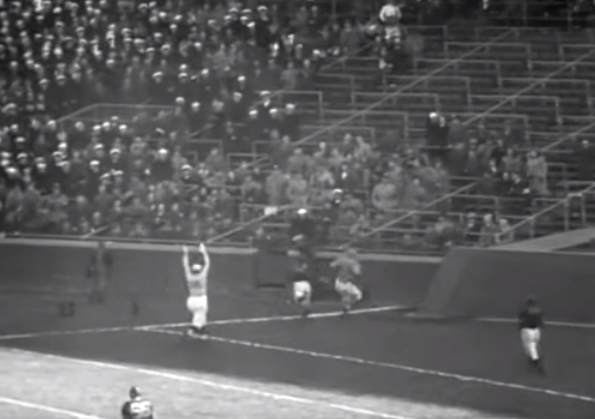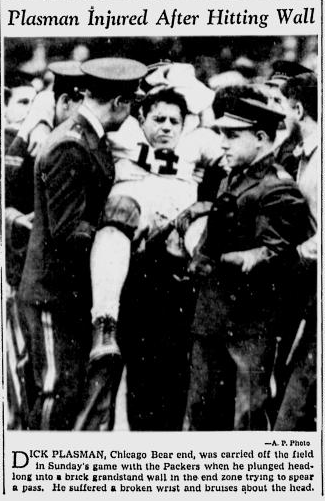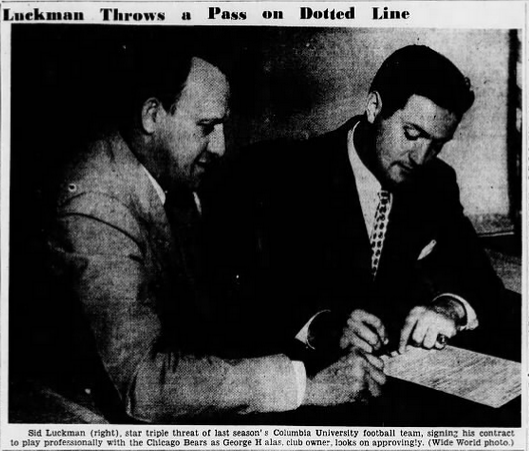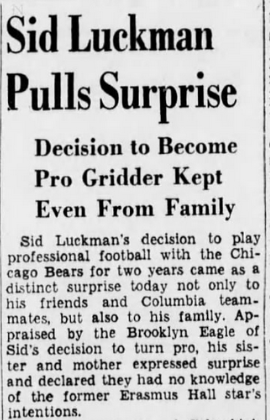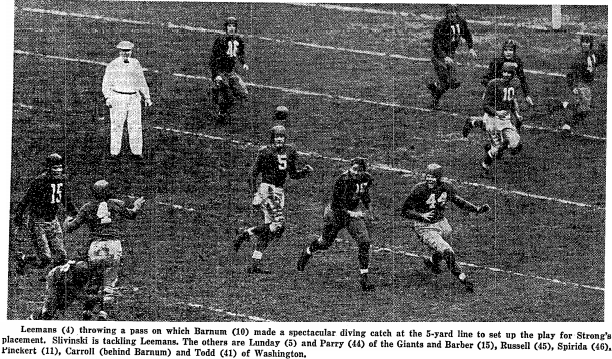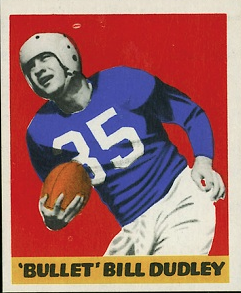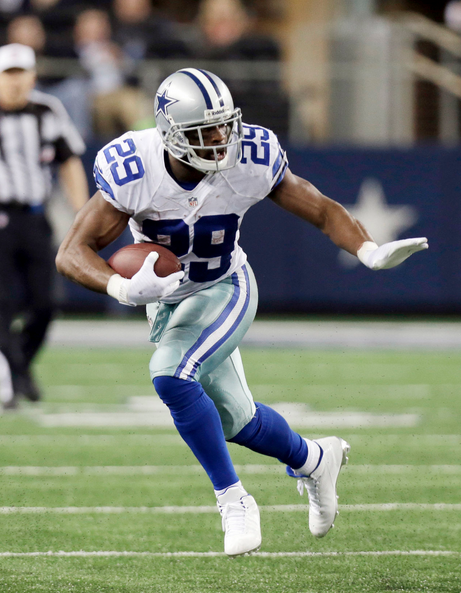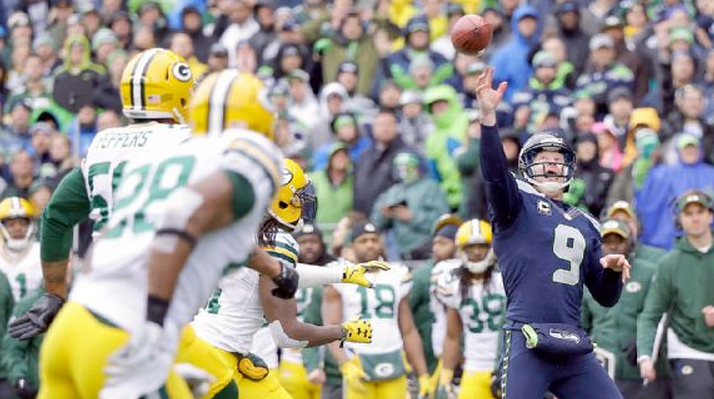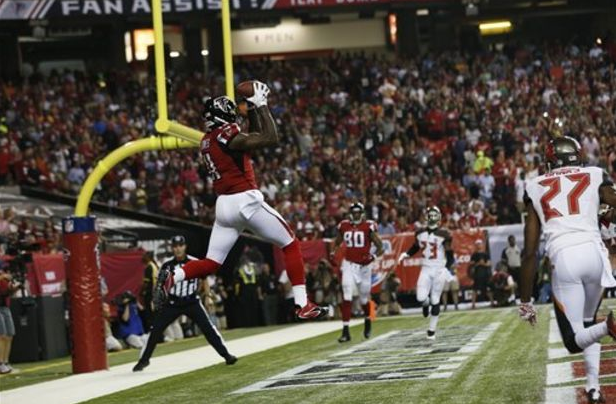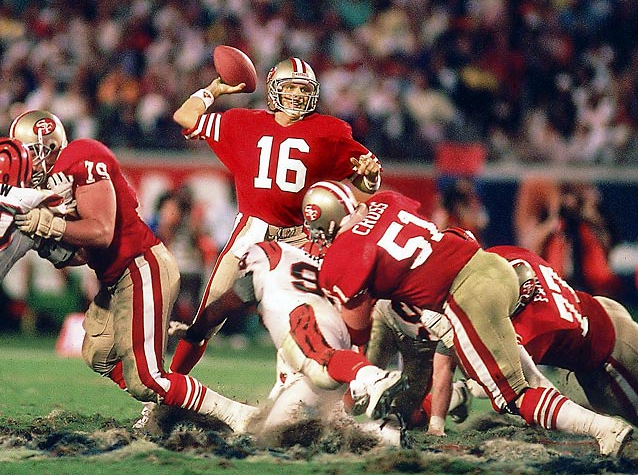After the 1933 season, black players disappeared from the NFL for 12 years — until the Second World War was over. The league’s founding fathers were never very anxious to talk about this shameful episode. When the subject was broached with the Bears’ George Halas in the early ’60s, he replied: “Probably it was due to the fact that no great [black] players were in the colleges then. That could be the reason. But I’ve never given this a thought until you mentioned it. At no time has it ever been brought up. Isn’t that strange?”
In Pro Football: Its Ups and Downs, the first book ever written about the pro game, another pioneer, Dr. Harry March, gave two rationales for the ban: (1) “There are so many Southern boys in the league that much feeling is sure to result”; and (2) “Management is frequently embarrassed by the refusal of dining cars and restaurants to serve the colored players and of hotels to give them the desired accommodations which the white players receive.”
(For good measure: March threw this in: “The Indians object more to playing against Negroes than do the Southern men for some reason.”)
At any rate, the issue was seldom raised in the early decades. Major-league baseball didn’t have any blacks then, either, so the NFL hardly felt like it owed anyone an explanation — never mind an apology. That’s why a couple of stories that ran in the Brooklyn Eagle in November 1935 are so remarkable. They discussed, in depth, what was never discussed: Why blacks had been excluded from the league.
“The way of the black man,” Harold Parrott wrote, “is beset with flying tackles and blocks of a more than flesh-and-blood sort in football, be it the college brand or among the paid platoons.
It may be news, for instance, that colored men, no matter if they be as brilliant as some of the dozen Negroes who have starred since the pro league’s beginning in [1920], have now been barred by unwritten law — for their own good.
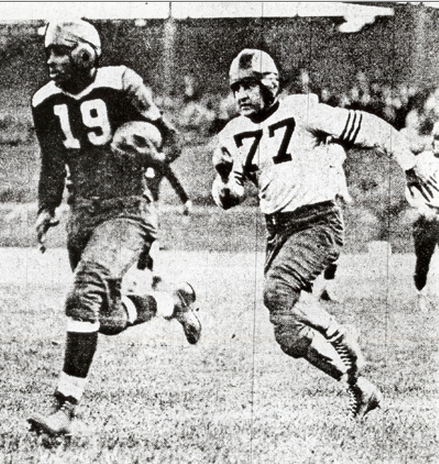
The Bears’ Red Grange (77) tries to catch the Cardinals’ Joe Lillard (19).
Parrott then turned to Brooklyn Dodgers coach Paul Schissler, who had coached black star Joe Lillard when the two were with the Chicago Cardinals. “I feel sorry for Lillard,” Schissler said. “He was a fine fellow, not as rugged as most in the pro game, but very clever. But he was a marked man, and I don’t mean that just the Southern boys took it out on him, either; after a while whole teams, Northern and Southern alike, would give Joe the works, and I’d have to take him out. Somebody started it, it seemed, and everybody would join in.
“But that wasn’t the worst. It got so my Cardinals were a marked team because we had Lillard with us, and how the rest of the league took it out on us! We had to let him go, for our own sake and for his, too! Playing in the line wouldn’t have been so bad, but how Lillard took punishment at halfback!”
Schissler was no bigot. In fact, he was one of the era’s more enlightened coaches. Several years later, when he was running the Hollywood Bears of the Pacific Coast League, he had another black legend, tailback Kenny Washington, on his team. (It was Washington — along with end Woody Strode — who re-integrated the NFL in 1946 with the Los Angeles Rams.)
Parratt’s follow-up to this story is every bit as fascinating. Lillard and Fritz Pollard, yet another black great, were playing at the time for the Harlem Brown Bombers, a barnstorming black team, and “confronted the writer,” Parratt wrote, when they found out about Schissler’s comments. The idea that blacks were being kept out of the NFL for self-preservation’s sake was ludicrous, they told him.
Pollard: “I played for 20 years, with white teams and against ’em, and I was never hurt so bad I had to quit a game. I took Jim Thorpe’s $1,000 dare that I’d never go near Canton, Ohio, in 1920. Not only did the Akron team and myself go there, but we beat ’em 10 to 0. I coached the Gilberton, Pa., team in 1923, on which were [white stars] Walter French, Lou Little, Heinie Miller and Lud Wray, and I played with ’em. I weighed 160 or so, and they never made me or the other colored boys — Paul Robeson, Inky Williams, Duke Slater and the rest — who followed in the pro league quit, either. So they needn’t say that’s the reason they’re keeping us out of the league. Joe, here, is as good as any back in that league right now, and he always took it when he played there.”
Lillard: “The pro league and the way they are supposed to hand out the bumps is a joke. Why, I never got hurt among the pros like I did when I was in college. It’s a business in the [National Football] league, and they let you be. But I can remember when I was playin’ for Doc Spears at the University of Oregon in 1931 – the year we beat Washington . . . with a sophomore team — why, fellows on the other team used to be told to gang [up on] me even when I wasn’t in a play, to try to get me off the field.”
According to Parratt, Art Rooney’s Pittsburgh club “offered $15,000” for Lillard “and was turned down.” After the ’33 season, Joe “was mysteriously released. Every club he contacted told him politely its ‘roster was full.’
“How strange in a league where Pollard, the all-America[n] Robeson, . . . Inky Williams, Sol Butler, John Shelburne of Dartmouth and Duke Slater of Iowa had helped build early foundations! All colored greats!”
That said, the Racial Animosity Thing was overblown, Pollard insisted. He’d “played with and against Alabamans and Georgians,” Parratt wrote, “and some of them are his greatest friends. He played on the borderline of Texas itself once.” As for Thorpe’s $1,000 challenge, it was just a publicity stunt, Fritz said. Jim was “one of the best friends I ever had.
“It’s the odd ideas of a few men who bring about this condition,” Pollard went on. He singled out Halas as one of those men. In 1925, Fritz’s next-to-last NFL season, he played for the Providence Steam Roller against the Bears — or rather, he tried to. “I got $3,000 for that game,” he told Parratt, “but because Halas brought pressure to bear, I was not allowed into the game until the last two minutes. Fifty-eight minutes on the bench for $3,000.”
(Papa Bear was probably worried that Pollard might show up Red Grange, who joined Chicago late in the season after finishing his college career at Illinois.)
Again, you just didn’t see stories like this in the 1930s . . . or the 1940s . . . or even the 1950s. Harold Parratt, wherever you are, we salute you. Had more mainstream sportswriters followed your lead, the NFL’s racial history might read much differently.
